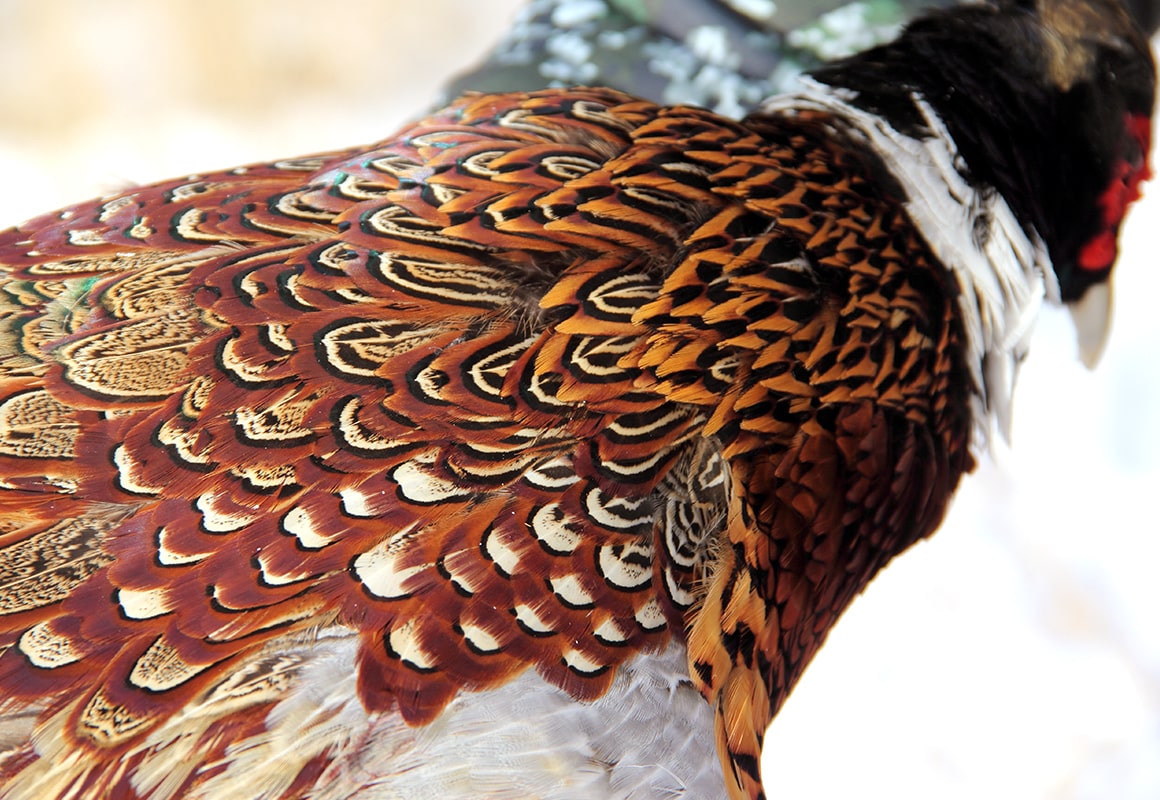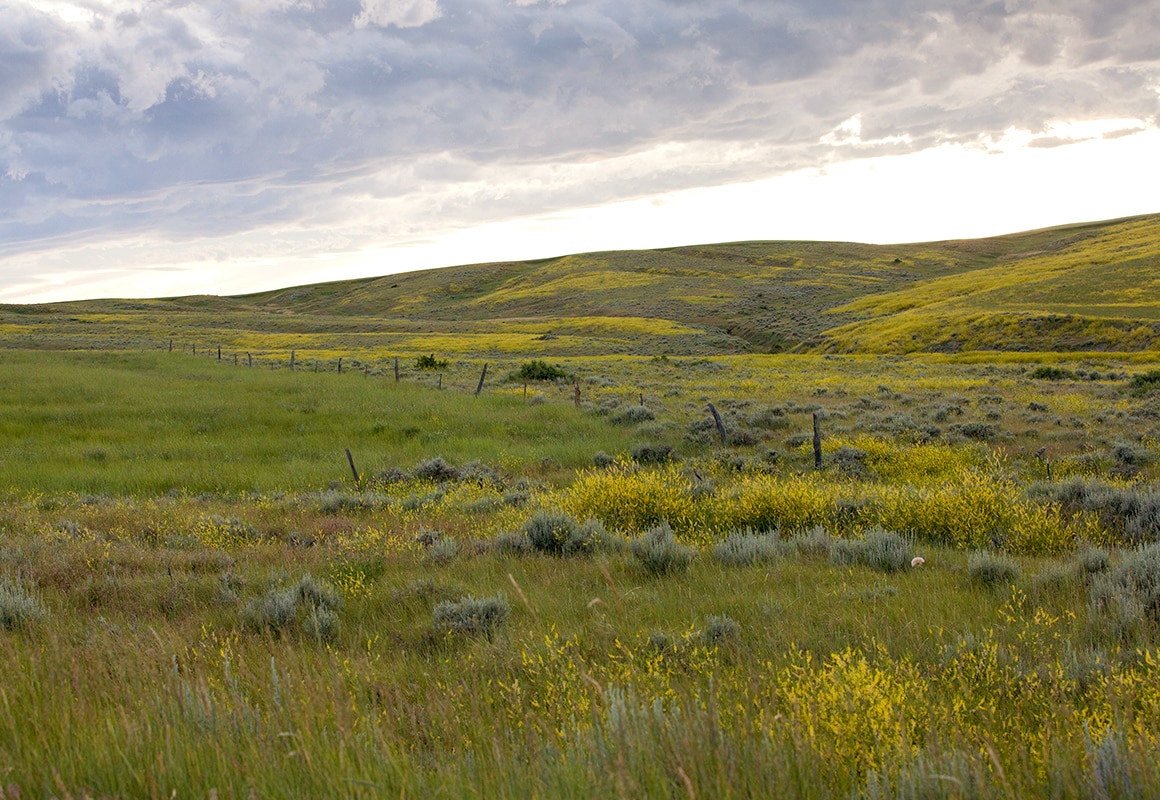A seasoned Montana hunter and dog trainer shares his tips for successful pre-season scouting.
Few things can curb the appetite of an upland bird hunter. A fall day following a brace of pointing dogs out on the open prairies sits deep within their hearts. It’s a bittersweet feeling as the sun sets on the final day of the season.
Memories of trips made with family and friends, all-star performances from our most loyal hunting partner, and that one perfect day where it all came together fill our minds. Soon, all thought will focus on September 1, the grand and glorious opening day of bird hunting season.
Ensuring a successful outcome for the upcoming year of bird hunting calls for a summer of training dogs, getting in shape, practicing with the shotgun, and—most importantly—pre-season scouting.
Using the onX App for E-Scouting
The onX Hunt App has greatly changed the way many, including myself, scout in the offseason. Previously, you waited until the snow melted before heading to the field to see what effects the winter had on the bird population. Some would venture to sage and sharptail grouse leks (mating areas) to count the males and compare their findings to previous years. Others took to the field to do some spring training in hopes of finding a bird or two. Then, as always, there was the fail-safe method that involved communicating with local ranchers to get their expert opinions on what they have seen while working cattle.
I still use these methods today, but in addition, I spend significant time on the computer e-scouting, especially during the winter months. Finding and locating new areas is my main priority. Saved maps and waypoints ensure my winter’s work is easy to utilize, and allow for more productive time in the field when spring arrives.

Compare Year-to-Year
Grounds that were hunted in the past are usually some of the first areas covered, allowing a comparison to previous years. After having a general idea of the effects from the brutal winter months, locating new areas becomes my top priority.
Upland birds rely on good cover, which can only be assessed in the field itself. E-scouting gives you a good lay of the land, but to truly know if it will hold birds you need to see it in person. Typically during this time it’s good to let the dogs get out and stretch their winter legs before the hens start nesting and raising broods. On these outings I’m not always looking for birds since this is when grouse will start gathering on their leks and it doesn’t mean they will be there come fall.
I turn my attention to see the type of cover and get an idea of what fields are going to be planted while also looking for old sign indicating birds have been in the area. This sign may be old white droppings that flake away with a kick of a boot; often moisture from the winter makes the dropping appear fresher than they really are. Regardless, finding them indicates birds. As expected, fresh tracks often indicate an immediate presence of birds.
Crops and Cover
Crops and cover may be the most important part of finding birds in the fall. Water is a factor as well, but juices from insects, morning dew, and small amounts of water will fulfill this need. Stock ponds and bigger water will attract birds if they are in the right area. On a good year where grasshoppers and other insects are plentiful, land with sagebrush and good grass makes the birds less reliant on planted crops. Work the field where there’s a split between sagebrush and native grasses. This has proven to be an effective method of finding birds.
Other years, birds will rely on cropland such as alfalfa, wheat, and sunflower fields to offset the lack of natural protein. Public lands surrounded by crops grasp my focus especially in the early fall. However, don’t overlook a luscious coulee filled with leafy greens or dandelions that may hold a sage grouse or two. Foliage from the overflow of stock ponds generally is a good attraction and place to focus. Conservation Reserve Program (CRP) lands can adequately provide all the needs of an upland bird. Most CRP areas are privately owned, but it never hurts to knock on a rancher’s door and ask for permission to hunt their land. I tend to use my onX App to figure out the landowner’s name, making permission-seeking a little more personable.

Weather Damage, Cattle, and Other Signs
During early summer months, you will find me spending most of my time in the truck checking up on my areas. I want to see if any weather-related damage occurred, if cattle were moved in, or if anything else would affect the area. Events like hail can be spotty, hitting one area very hard but just miles away having no effect whatsoever. Brush fires will also alter where I hunt, as the birds will move to adjacent lands. The most favorable time of the day for this type of scouting is during the evenings or early mornings. At these times, you can catch birds crossing the roads to or from their feeding areas. It’s a true joy seeing the birds and how they act moving from area to area.
Come August, I’m headed to the field with dogs in tow. Usually, it’s still too hot to work a dog all day, but a morning or evening run will help improve physical conditioning and start to acclimate both you and your dog to the field conditions. Finding the birds is the main focus for scouting the final weeks before the season opens. All the time you have spent in the off-season studying and learning every aspect of upland birds pays off come the first of September.
Block Management Layer
One last piece of advice is to turn on the Block Management Layer on your Hunt App. You’ll find many more acres to hunt. Some of the best hunting I’ve had was on a combination of public land adjacent to block management land. Knowing and focusing on the two main factors in fall—food and cover—improves your odds of finding more birds.